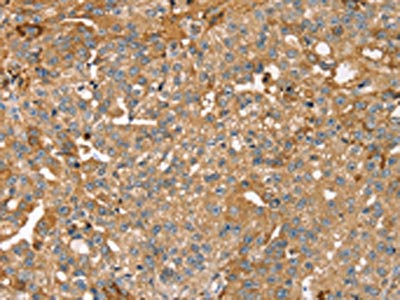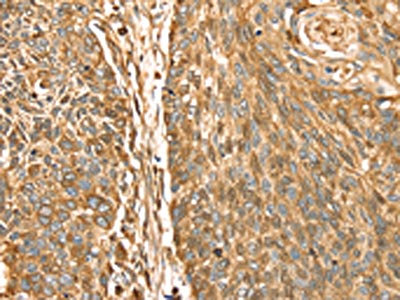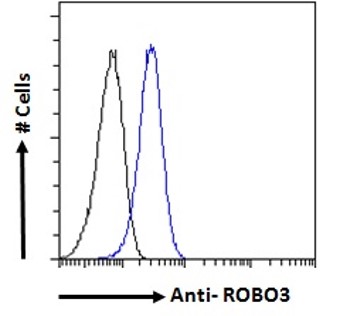
The image on the left is immunohistochemistry of paraffin-embedded Human breast cancer tissue using CSB-PA291923(ROBO3 Antibody) at dilution 1/25, on the right is treated with fusion protein. (Original magnification: x200)
ROBO3 Antibody
CSB-PA291923
ApplicationsELISA, ImmunoHistoChemistry
Product group Antibodies
ReactivityHuman, Mouse
TargetROBO3
Overview
- SupplierCusabio
- Product NameROBO3 Antibody
- Delivery Days Customer20
- ApplicationsELISA, ImmunoHistoChemistry
- CertificationResearch Use Only
- ClonalityPolyclonal
- ConjugateUnconjugated
- Gene ID64221
- Target nameROBO3
- Target descriptionroundabout guidance receptor 3
- Target synonymsHGPPS, HGPPS1, HGPS, RBIG1, RIG1, roundabout homolog 3, retinoblastoma inhibiting gene 1, roundabout, axon guidance receptor, homolog 3, roundabout-like protein 3
- HostRabbit
- IsotypeIgG
- Protein IDQ96MS0
- Protein NameRoundabout homolog 3
- Scientific DescriptionThis gene is a member of the Roundabout (ROBO) gene family that controls neurite outgrowth, growth cone guidance, and axon fasciculation. ROBO proteins are a subfamily of the immunoglobulin transmembrane receptor superfamily. SLIT proteins 1-3, a family of secreted chemorepellants, are ligands for ROBO proteins and SLIT/ROBO interactions regulate myogenesis, leukocyte migration, kidney morphogenesis, angiogenesis, and vasculogenesis in addition to neurogenesis. This gene, ROBO3, has a putative extracellular domain with five immunoglobulin (Ig)-like loops and three fibronectin (Fn) type III motifs, a transmembrane segment, and a cytoplasmic tail with three conserved signaling motifs: CC0, CC2, and CC3 (CC for conserved cytoplasmic). Unlike other ROBO family members, ROBO3 lacks motif CC1. The ROBO3 gene regulates axonal navigation at the ventral midline of the neural tube. In mouse, loss of Robo3 results in a complete failure of commissural axons to cross the midline throughout the spinal cord and the hindbrain. Mutations ROBO3 result in horizontal gaze palsy with progressive scoliosis (HGPPS); an autosomal recessive disorder characterized by congenital absence of horizontal gaze, progressive scoliosis, and failure of the corticospinal and somatosensory axon tracts to cross the midline in the medulla. Alternative transcript variants have been described but have not been experimentally validated.
- ReactivityHuman, Mouse
- Storage Instruction-20°C or -80°C
- UNSPSC41116161





